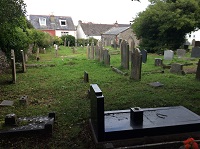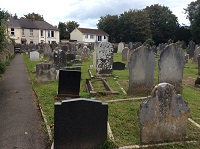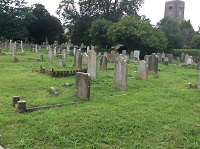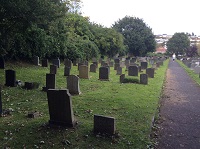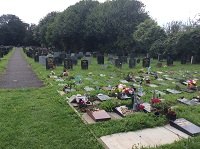But why is the Churchyard divided up?
That’s mainly historical:
During the eighteenth and nineteenth centuries there was a great deal of unrest nationally over what were seen as scandals in graveyard management, especially in urban areas.
Given the relative numbers of Anglican and Non-Conformists something had to be done to appease the Non-Conformists. In practice that didn’t happen until towards the end of the nineteenth century.
Non-Conformists felt they’d been getting a raw deal where burial rites had been dictated by Anglicans and so started to set up their own graveyards. Brixham is perhaps an example of this.
Something of the fervour which was gripping the country is evident from what happened in Brixham in the lives of two of the founding Trustees: Wolston and Lakeman.
All was not well in Lower Brixham. In 1843, Thomas Lakeman, presumably then worshipping at All Saints wrote and published a 23 page letter to the congregation at All Saints which did not pull any punches. The incumbent, one Rev. HF Lyte had been having a rough time of it, losing considerable numbers of his congregation to the Non-Conformists over a period of years. At one time he lost half the choir at one go.
Richard Wolston, a solicitor, lived in a house where Saxon Court is now on New Road. He’s probably best remembered for financing the railway branch line from Brixham Road (Churston) into a new station at Furzeham.
In 1839 he and his wife are recorded as contributing money to the Incorporated Society for the Propagation of the Gospel in Foreign Parts on the same account as Rev HF Lyte, his curate son in law Hogg, and two other curates: Holdsworth and Twysden. Quite a turnaround.
Not long after the Churchyard was purchased, cholera broke out in Brixham leading to about 80 deaths. Wolston subsequently petitioned the MP who then lived at Lupton House to have the town inspected with a view to raising funds to improve water supply and sanitation.
Both he and Lakeman were recorded as working with the inspector together with Hogg in attempting to address the unsanitary conditions faced by residents mainly in Lower Brixham.
One other founding Trustee, Frederick Hoare, left Brixham in 1854 for Australia leaving his wife and family behind. He sailed from Liverpool in 1854 for Melbourne along with another local man: Squiers. Sailing on a new ship, the Red Jacket, that reached Melbourne in record time, they are reported to have embarked on building in and around Melbourne for about two years.
A copy of the diary Frederick kept on the outward voyage is now in the South Australian Maritime Museum in Adelaide. In 1856, receiving news that his wife was ill he returned to Brixham where she died shortly afterwards. He is reported to have died three years later. One of his grandsons, Archer Hoare, became the Chairman of Middlesex County Council.


